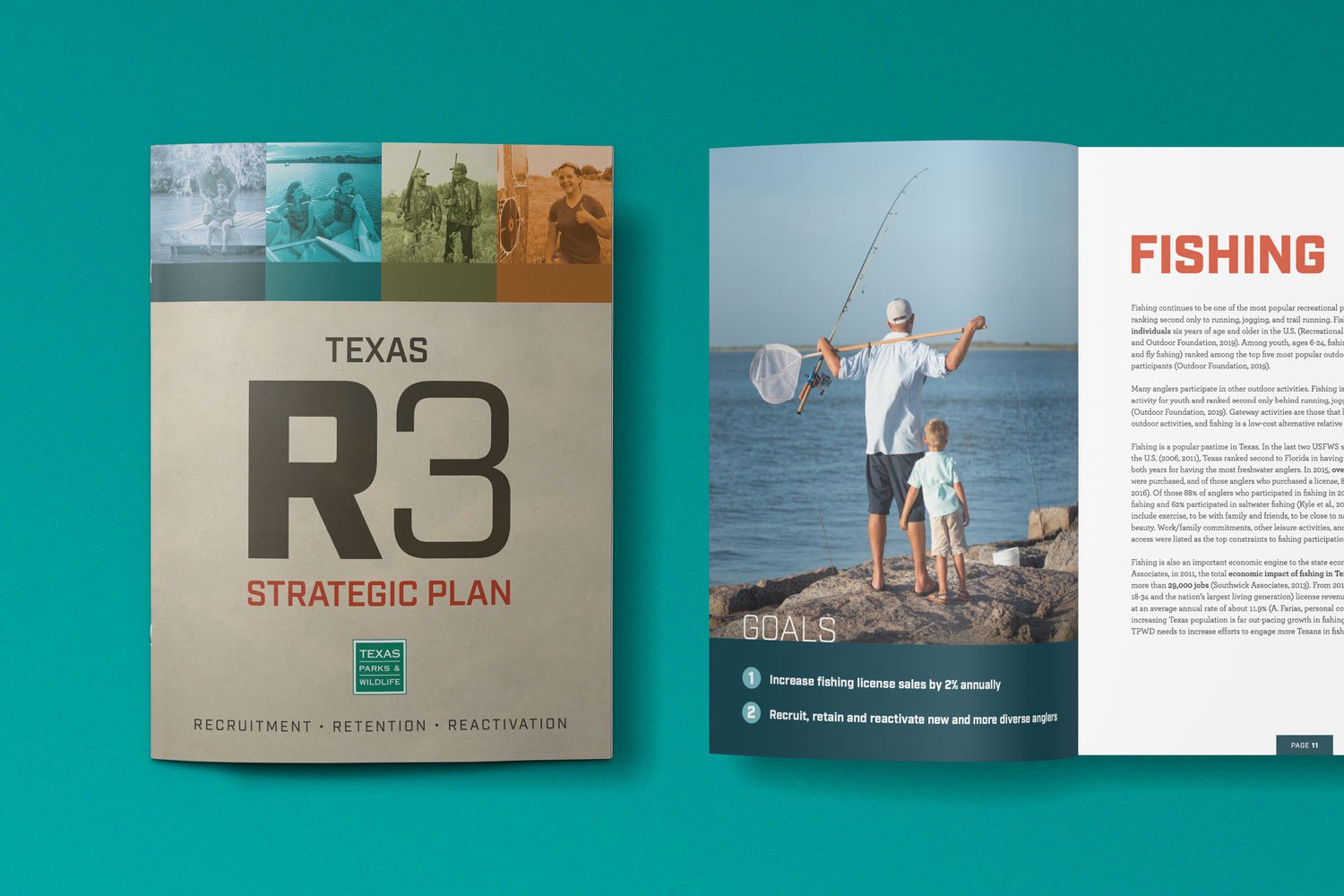Texas R3 Strategic Plan
Table of Contents
Introduction
The Texas Recruitment, Retention, and Reactivation (R3) Strategic Plan aims to address a looming conservation crisis. For many years, the number of people who hunt and fish in Texas has remained relatively stable, yet the state population has grown exponentially. The upshot is a smaller percentage of people are paying into the user-pay, user-benefit system of recreational licenses and excise taxes on firearms, ammunition, and fishing equipment that has powered North American conservation for decades.

Long-term Trends
Skyrocketing populations and increasingly urban citizenries make it a challenge for state game and fish agencies to engage new people in outdoor activities at a pace that comes anywhere near the rate of population growth. Yet, the future of our natural resources depends on our ability to make these outdoor activities relevant and accessible to all Texans.
Besides threatening the long-term financial viability of conservation in Texas, this trend is worrisome for the people of our state. Numerous studies have shown how valuable time outdoors is for families and children, for mental and physical health, and for sustainable jobs and economic benefits generated by the multi-billion-dollar hunting and fishing industry in Texas.
Accommodate Increasing Diversity
To adequately serve our changing demographics and range of customer preferences, and thus deliver services more effectively, the department must recognize and accommodate the increasing diversity among its constituents. To do this, we must understand diversity in our state and meet the needs of population subgroups that have been historically underserved. For example, the Hispanic population in Texas currently represents 40% of the total population, and is predicted to be the largest demographic in Texas by 2022. Additionally, the 2010 census estimated that almost 85% of the Texas population resides in urban areas, illustrating the importance of communicating with urban audiences and continuing to provide close-to-home outdoor recreation opportunities for them.
Mapping Current Programs
Along with setting goals and objectives to increase participation, the plan also maps current TPWD R3 programs, showing which strategy (recruitment, retention or reactivation) they are designed to address, and which target audience(s) they are designed to reach. In the future, more in-depth data analytics will be utilized to help the department better understand and target R3 efforts.
Timeframes to meet objectives are categorized under each goal as ongoing, short-term (1-2 years), or long-term (2-5 years). Some of the objectives fall into more than one category.
TPWD intends to work with a coalition of like-minded partners to use this plan as a comprehensive and ongoing guide for R3 actions statewide, as described in the following pages.
References
Kyle, G., M. A. Schuett, J. Park, and A. Landon. 2016. Demographics, participation, attitudes,
and management preferences of Texas anglers. Texas A&M University, Department of Recreation, Park, and Tourism Sciences, College Station.
National Marine Manufacturers Association. 2018. Texas Recreational Boating Infographic. Chicago, IL.
National Shooting Sports Foundation. 2019. National Sporting Goods Assn. Sports Participation in 2018 – Shooting Sports; ISSN: 0882-8210. Responsive Management. Shooting Sports Participation in the US in 2018. NSSF Reports®. nssf.org.
Outdoor Foundation. 2019. 2019 Outdoor Participation Report. Washington, D.C.
Outdoor Foundation. 2019. 2019 Special Report on Paddlesports and Safety. Washington, D.C.
Recreational Boating & Fishing Foundation and Outdoor Foundation. 2019. 2019 Special Report on Fishing. Alexandria, VA.
Responsive Management/National Shooting Sports Foundation. 2017. Hunting, Fishing, Sport Shooting, and Archery Recruitment, Retention, and Reactivation: A Practitioners Guide. Harrisonburg, VA.
Southwick Associates. 2012. Sportfishing in America: An Economic Force for Conservation. Produced for the American Sportfishing Association (ASA) under a U.S. Fish and Wildlife Service (USFWS) Sport Fish Restoration grant (F12AP00137, VA M-26-R) awarded by the Association of Fish and Wildlife Agencies (AFWA).
U.S. Coast Guard. 2012. National Recreational Boating Survey. Washington, D.C.
Acknowledgements
We appreciate the support of the Texas Parks and Wildlife Department. Partial funding for the writing of this plan was supplied by the Recreational Boating & Fishing Foundation and the National Wild Turkey Federation. We would like to thank TPWD executive-level supporters Craig Bonds, Mischelle Diaz, Tom Harvey, Josh Havens, Robin Riechers, John Silovsky, and Clayton Wolf, with special thanks to the plan writers — Justin Dreibelbis, Steve Hall, Michael Hobson, Janis Johnson, Ken Kurzawski, Tim Spice, and Zack Thomas, along with all TPWD staff who helped make this plan a reality. We would also like to thank Phil Seng, Vice President of DJ Case and Associates, for his contribution and guidance in the writing of the plan.